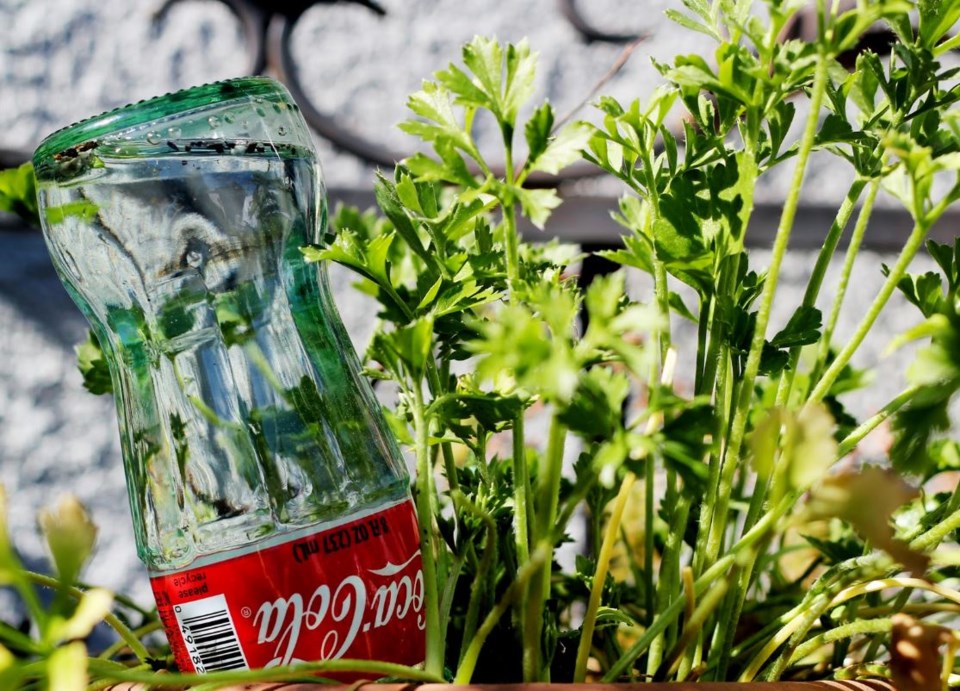With wells going dry, city water restrictions tightening and no rain predicted for the foreseeable future, it’s not the best time to contemplate all the water shortage preparations that would have helped so much had we only done them in the spring.
More useful right now is figuring out ways of using the little bit of water that still comes our way.
Conventional watering advice is to give infrequent thorough drenchings. But in desperate times this becomes impossible unless one picks a few favourites and leaves the others to their fate.
Luckily, even small doses of water can stop a plant from dying. Grey water is very useful and most is relatively clean. I’m thinking of left-over tea, boiled-egg and vegetable water, what’s left over from rinsing dishes, washing clothes or the cold clean water that runs down the drain while waiting for hot water to kick in. All good for flushing toilets too.
Years ago, when our water supply came erratically from a five-foot well down in the bush, we plugged the bath and got a water bonanza from a week of showers. Showering with cold water up to your knees is not fun.
But on weekends, we put a hose in the bath, connected a small portable pump and used the shower water for watering the vegetable garden. Later we harvested a very decent crop — though we did discover that pole beans watered once weekly are stringy unless picked much earlier than normal.
Grey water isn’t clean enough for leafy vegetables or dwarf beans, but it’s very effective for trees, shrubs or berry bushes especially if you get it directly down to the roots.
Standard garden equipment includes deep-root watering spikes, which can attach to a hose. The low-tech way is to plunge a crowbar into the soil (or in a pinch a sharpened piece of wood) and pour water down the hole. Best to cover the hole afterwards so it stays open for future use.
Container gardeners may be interested in watering bulbs. Lee Valley Tools sell porous ceramic spikes, which can screw onto various water containers such as soft drink bottles or wine bottles.
With food crops, priority should always go to anything currently forming fruit or the edible part of the crop. Other extra-needy plants include shallow-rooted ones such as rhododendrons and blueberries. Any tree, shrub or perennial plant in its first year also has an increased need for water.
Meanwhile, the tougher characters include anything with taproots, tubers or bulbs. Filagree, lacy or needle-like leaves, grey leaves or succulent or waxy leaves also withstand drought well. So do lawns — and they do green up when (if?) fall rains arrive.
People wanting to be prepared next spring, in case next year is like this, could start early mulching vegetable beds with grass clippings in-between the rows. The clippings can be spread closer into the rows as vegetables sprout.
Soaker hoses are a good investment too, though it’s best to remember the soaking is less effective towards the far end of the hose. Sprinklers are not. Sprays of water evaporate super-fast.
Anne Marrison is happy to answer garden questions. Send them to her via [email protected]. It helps if you include the name of your city or region.



